Taj Mahal
This morning we only have a 15 minute drive from the hotel to the Taj Mahal. We park the minibus and take a short walk from the carpark to the entrance.
At the Taj we participated in a well-known tourist ritual - queuing. It's not something that I enjoy, but to be honest, apart from security checks at the airports we've not had to wait in line at all. So this morning comes as something of a shock to the system. Eventually we are processed through security and are able to enter the Taj Mahal complex.
The Taj Mahal is one of the most famous buildings in the world, the mausoleum of Shah Jahan's third and favourite wife, Mumtaz Mahal.
Completed in 1653, the Taj Mahal was built by the Mughal King Shah Jahan on the south bank of the Yamuna River as the final resting place for his third and most beloved wife, Mumtaz Mahal. The mausoleum, which is finished in marble, and set amidst landscaped gardens took 22 years (1630–1652) and an estimated 20,000 workers, masons and jewellers to build.
The Taj Mahal was built on a marble platform that stands above a sandstone one. Verses of the Koran are inscribed on it and at the top of the gate are twenty-two small domes, signifying the number of years the monument took to build. The most elegant dome of the Taj Mahal is 60ft in diameter and 80ft high; directly under this dome is the tomb of Mumtaz Mahal. Shah Jahan's tomb was erected next to hers by his son Aurangzeb. The interiors are decorated with fine inlay work, incorporating semi-precious stones.
We enter the landscaped gardens through the red sandstone arch and our eyes follow the water canal to the reflecting pool, which is halfway between the gate and the Taj Mahal, and then to the Taj Mahal itself.
For me the most elegant decorative elements of the building are the calligraphic ones, with passages from the Qur'an used throughout. The text on the Great Gate reads: "O Soul, thou art at rest. Return to the Lord at peace with Him, and He at peace with you."
The calligraphy was created by a calligrapher named Abd ul-Haq, in 1609 upon whom Shah Jahan conferred the title of "Amanat Khan" as a reward for his "dazzling virtuosity".
Much of the calligraphy is composed of thuluth script (large and elegant, cursive script), made of jasper or black marble, inlaid in white marble panels. The calligraphy on the marble cenotaphs in the tomb is particularly detailed and delicate.
If I am ever fortunate enough to visit India again I'd like to revisit the Taj Mahal, but would want to visit early in the morning, before the crowds, to see it in a more serene setting without the seething mass of humanity.
After our visit to the Taj Mahal we drive a short distance along the river to Fort Agra or the Red Fort.
Fort Agra - The Red Fort
The Mughal Emperors and their civilisation may be long gone but Fort Agra or the Red Fort and the Taj Mahal remain as a legacy and tangible testimony to their influence. And whilst the history of Agra can be traced back more than 2,500 years, it was not until the reign of the Mughals that it became more than a provincial city. Agra was at its zenith during the reign of Humayun's son, Akbar the Great (1556 - 1605), when the main part of the Agra Fort was built.
This bastioned fortress, with walls of red sandstone rising above a moat and interrupted by graceful curves and lofty bastions, encompassed within its walls the imperial city of the Mogul rulers. The fort is crescent shaped, flattened on the east with a long, nearly straight wall facing the Yamuna River. It has a total perimeter of 1.5 miles and the moat, which surrounds the outer wall, is 30ft. wide and 33ft. deep. The somewhat forbidding exteriors of the fort conceal an inner paradise.
Notable buildings in the fort include two white marble mosques, the Moti Masjid or the Pearl Mosque, constructed in 1646-53 by Shah Jahan and the Nagina Masjid built during the reign of Aurangzeb (1658-1707); Diwan-i-Khas, built in 1637 and the multi-pillared Diwan-i-Am (Hall of Public Audience), constructed by Shah Jahan in 1628; and the octagonal tower of Muhammam Burj. Of the two gates, the original and grandest entrance was through the Delhi Gate, which leads to the inner portal called the Hathi Pol or Elephant Gate. But now the fort can only be accessed through the Amar Singh Gate.
As I look across the bend in the Yamuna River I can see the Taj Mahal in the distance and think of Emperor Shah Jahan who may have had a similar view. He was imprisoned at Fort Agra for the last eight years of his life by his son Aurangzeb. Our guide tells us that Shah Jahan is said to have died in the Musamman Burj from where he had a view of the Taj Mahal.
Leaving through the Amar Singh Gate we walk through the crowds to our waiting minibus which whisks us back to our hotel where we can recharge our batteries!
After a busy day we're ready to rest and in the evening we sit down to dinner listening to the sounds of the sitar and drums...
Taj Mahal - Crown of palaces
Sunday, August 14, 2011
 Agra, Uttar Pradesh, India
Agra, Uttar Pradesh, India
Other Entries
-
1A Passage to India
Aug 086 days prior London, United Kingdomphoto_camera0videocam 0comment 0
London, United Kingdomphoto_camera0videocam 0comment 0 -
2Looking for the real India...
Aug 095 days prior Delhi, Indiaphoto_camera8videocam 0comment 0
Delhi, Indiaphoto_camera8videocam 0comment 0 -
3New day - New Delhi
Aug 104 days prior Delhi, Indiaphoto_camera25videocam 0comment 0
Delhi, Indiaphoto_camera25videocam 0comment 0 -
4On the road to Rajasthan
Aug 113 days prior Delhi, Indiaphoto_camera9videocam 0comment 0
Delhi, Indiaphoto_camera9videocam 0comment 0 -
5Jaipur - The pink city
Aug 113 days prior Jaipur, Indiaphoto_camera14videocam 0comment 0
Jaipur, Indiaphoto_camera14videocam 0comment 0 -
6From Palace of Winds to Stargazing and City Palace
Aug 122 days prior Jaipur, Indiaphoto_camera49videocam 0comment 0
Jaipur, Indiaphoto_camera49videocam 0comment 0 -
7From pink city to ghost city
Aug 131 day prior Jaipur, Indiaphoto_camera9videocam 0comment 0
Jaipur, Indiaphoto_camera9videocam 0comment 0 -
8The Jewel in the Crown
Aug 131 day prior Fatehpur Sikri, Indiaphoto_camera22videocam 0comment 0
Fatehpur Sikri, Indiaphoto_camera22videocam 0comment 0 -
9A grand night in Agra
Aug 131 day prior Agra, Indiaphoto_camera7videocam 0comment 0
Agra, Indiaphoto_camera7videocam 0comment 0 -
10Taj Mahal - Crown of palaces
Aug 14 Agra, Indiaphoto_camera24videocam 0comment 0
Agra, Indiaphoto_camera24videocam 0comment 0 -
11All aboard the Shatabdi Express
Aug 151 day later Agra, Indiaphoto_camera2videocam 0comment 0
Agra, Indiaphoto_camera2videocam 0comment 0 -
12On the road from Jhansi to Khajuraho
Aug 151 day later Jhansi, Indiaphoto_camera8videocam 0comment 0
Jhansi, Indiaphoto_camera8videocam 0comment 0 -
13Temple "..."in the presence of God"
Aug 151 day later Khajuraho, Indiaphoto_camera19videocam 0comment 0
Khajuraho, Indiaphoto_camera19videocam 0comment 0 -
14Temples
Aug 162 days later Khajuraho, Indiaphoto_camera35videocam 0comment 0
Khajuraho, Indiaphoto_camera35videocam 0comment 0 -
15From spiritual life to village and school life
Aug 162 days later Rajnagar, Indiaphoto_camera14videocam 0comment 0
Rajnagar, Indiaphoto_camera14videocam 0comment 0 -
16Aarti on the Ganges
Aug 162 days later Varanasi, Indiaphoto_camera17videocam 0comment 0
Varanasi, Indiaphoto_camera17videocam 0comment 0 -
17Morning ritual on the Ganges
Aug 173 days later Varanasi, Indiaphoto_camera26videocam 0comment 0
Varanasi, Indiaphoto_camera26videocam 0comment 0 -
18Sarnath - Starting the Wheel of the Dharma
Aug 173 days later Sarnath, Indiaphoto_camera31videocam 0comment 0
Sarnath, Indiaphoto_camera31videocam 0comment 0 -
19Leaving Varanasi or bye bye Benares
Aug 184 days later Varanasi, Indiaphoto_camera0videocam 0comment 0
Varanasi, Indiaphoto_camera0videocam 0comment 0 -
20Transit Delhi
Aug 184 days later Delhi, Indiaphoto_camera1videocam 0comment 0
Delhi, Indiaphoto_camera1videocam 0comment 0 -
21Overnight luxury in boom town
Aug 184 days later Gurgaon, Indiaphoto_camera0videocam 0comment 0
Gurgaon, Indiaphoto_camera0videocam 0comment 0 -
22Return trip to Delhi airport
Aug 195 days later Gurgaon, Indiaphoto_camera2videocam 0comment 0
Gurgaon, Indiaphoto_camera2videocam 0comment 0 -
23From Delhi to Dabolim
Aug 195 days later Delhi, Indiaphoto_camera1videocam 0comment 0
Delhi, Indiaphoto_camera1videocam 0comment 0 -
24Goa
Aug 195 days later Dabolim, Indiaphoto_camera0videocam 0comment 0
Dabolim, Indiaphoto_camera0videocam 0comment 0 -
25Where the boys go!
Aug 195 days later Sinquerim, Indiaphoto_camera0videocam 0comment 0
Sinquerim, Indiaphoto_camera0videocam 0comment 0 -
26Another day, another hotel
Aug 206 days later Sinquerim, Indiaphoto_camera0videocam 0comment 0
Sinquerim, Indiaphoto_camera0videocam 0comment 0 -
27Roadside to Poolside
Aug 217 days later Sinquerim, Indiaphoto_camera15videocam 0comment 0
Sinquerim, Indiaphoto_camera15videocam 0comment 0 -
28Sunshine and showers in Calangute
Aug 228 days later Sinquerim, Indiaphoto_camera16videocam 0comment 0
Sinquerim, Indiaphoto_camera16videocam 0comment 0

 Agra, Uttar Pradesh, India
Agra, Uttar Pradesh, India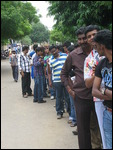
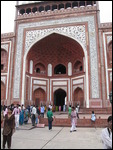
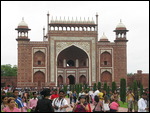
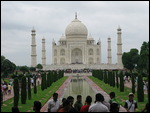
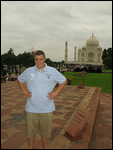


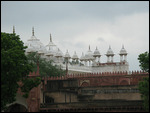
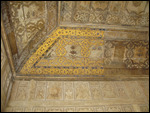
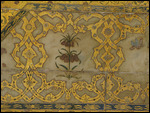
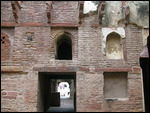
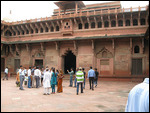
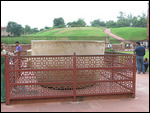
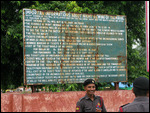
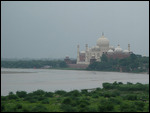
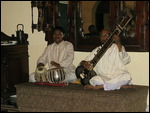
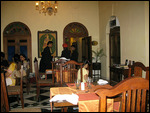



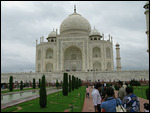

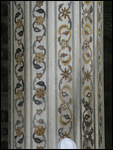
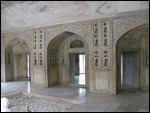
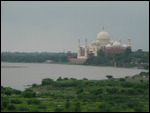
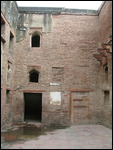
2025-05-23